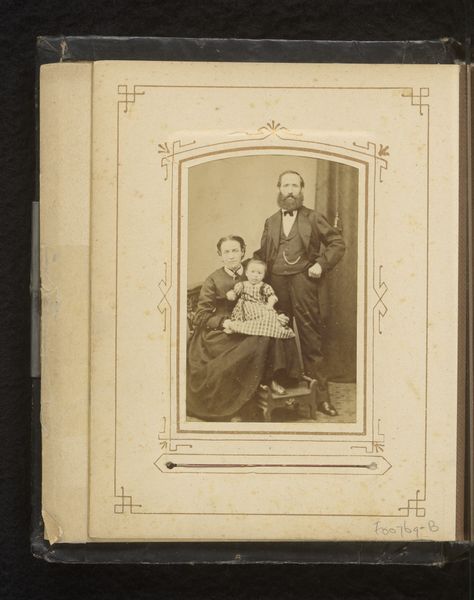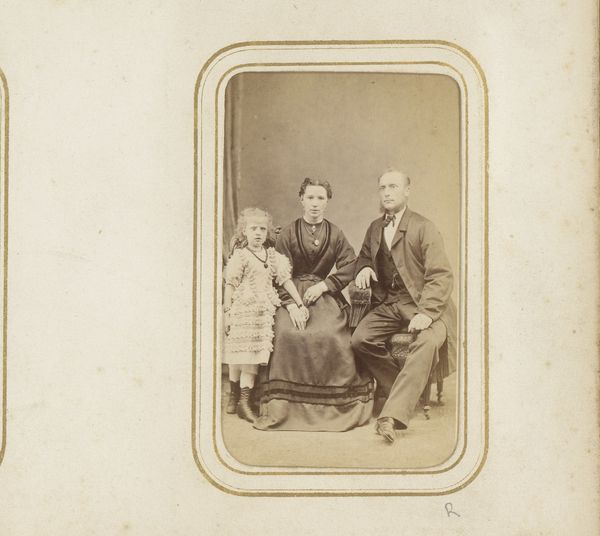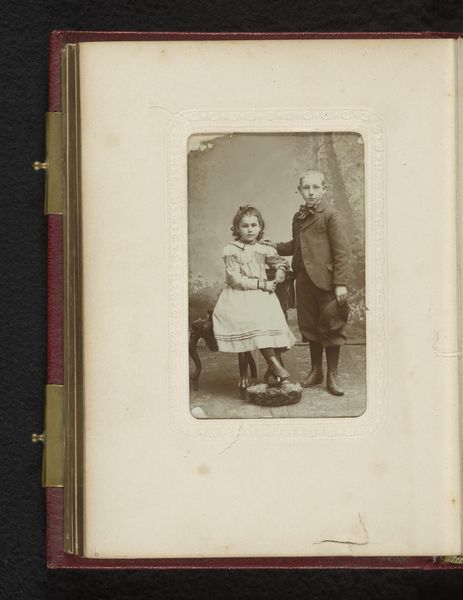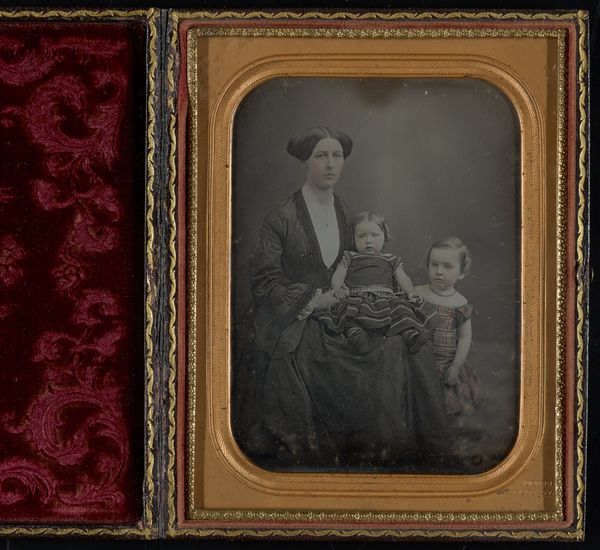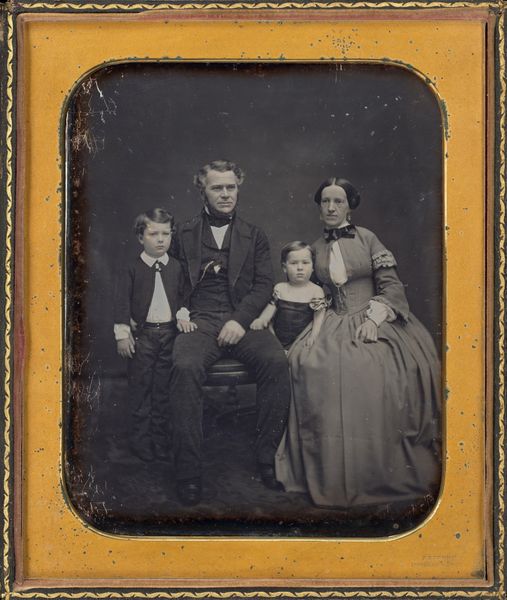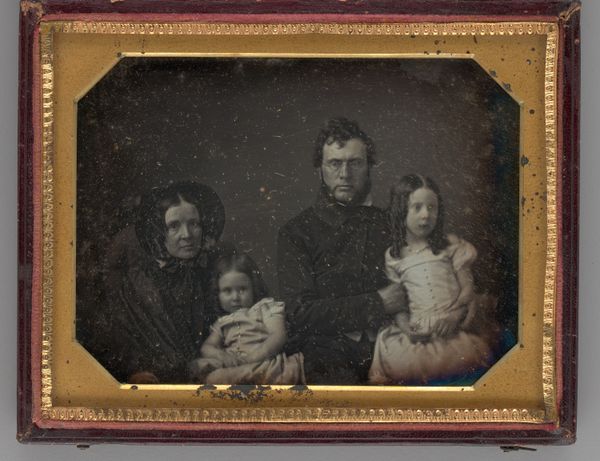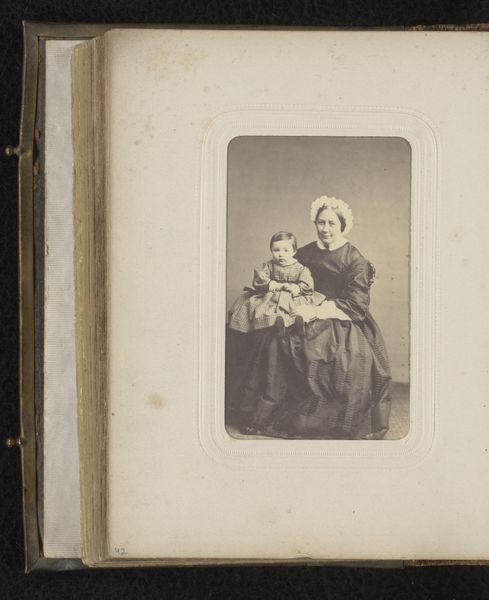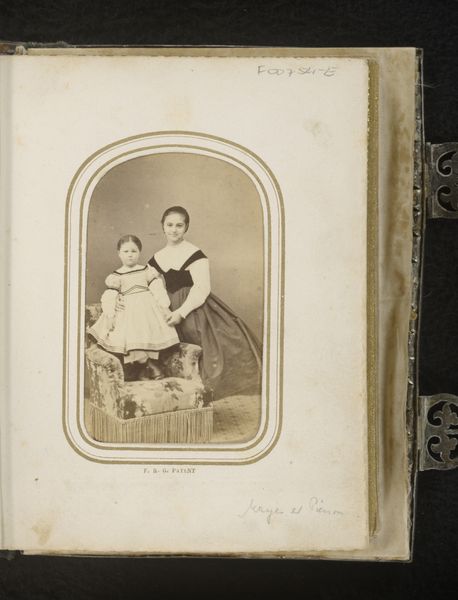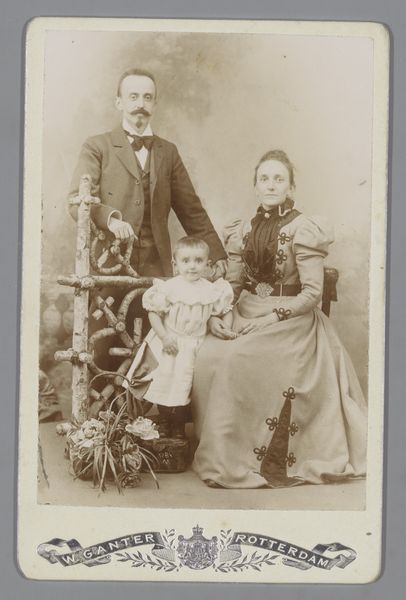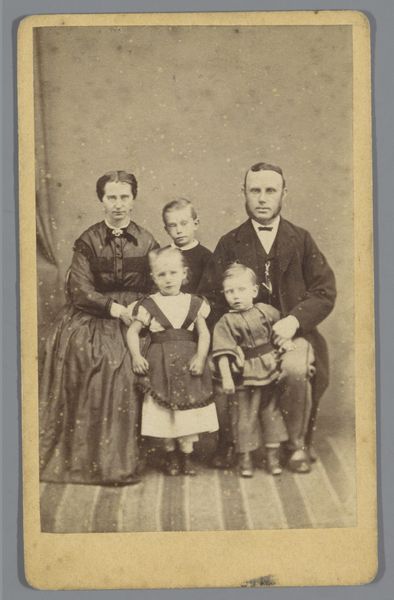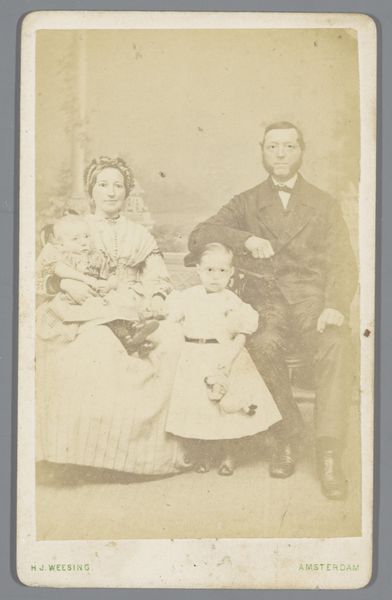
daguerreotype, photography, albumen-print
#
portrait
#
daguerreotype
#
figuration
#
photography
#
child
#
romanticism
#
genre-painting
#
albumen-print
Dimensions: 10.8 × 8.3 cm (plate); 12.3 × 10 × 1.9 cm (case)
Copyright: Public Domain
Curator: Here we have an untitled daguerreotype portrait, likely dating from the mid-19th century. The photograph presents a family of three: a father, mother, and their young daughter. Editor: It’s remarkably stiff and formal, isn't it? Their poses are so rigid, their faces holding no discernible emotion. It makes me think about the sheer investment of time it must have taken to sit still long enough for the exposure, yet revealing a total disconnection within. Curator: Precisely. The formality you're picking up on is deeply connected to the emergence of photography and its relationship to Victorian social ideals. These were images of aspiration, of solidifying a middle-class identity that emphasized decorum, respectability, and family unity in very codified ways. Consider the clothing: the father's dark suit, the mother and daughter's matching plaid fabrics. It speaks to visual codes denoting status. Editor: I see. So the clothing itself functions as a symbolic language? Curator: Absolutely. Plaid held specific cultural associations—perhaps connected to Scottish heritage—and the fact that mother and daughter share this textile speaks to a deliberate connection and reinforcement of lineage. The oval framing too reinforces this sentimentality. Also, notice the ornate details of the frame, its gilded surface implying a certain degree of wealth and value attributed to the image within. Editor: Yes, that gilded frame is striking. It really elevates what otherwise could feel like a simple record. I wonder about the child, though. She’s centrally positioned, yet she's holding herself quite tense, it looks like unease around her mouth. Children had no social standing so why her front and center? Curator: It’s vital that the child appears as central: for inheritance, family name and memory but moreover for Victorian viewers, the figure of the child symbolized purity and innocence—ideals heavily promoted in that era. Capturing the likeness of children became incredibly popular. This portrait isn't simply a document of appearances; it’s a meticulously constructed presentation of a family aspiring to a certain place within their world. Editor: Interesting, a very clear insight to family aspiration. Now I can’t help but wonder how they fared decades following. It brings their image closer to me. Curator: Indeed. Photography's capacity to preserve moments gives these long-gone people continued impact.
Comments
No comments
Be the first to comment and join the conversation on the ultimate creative platform.
